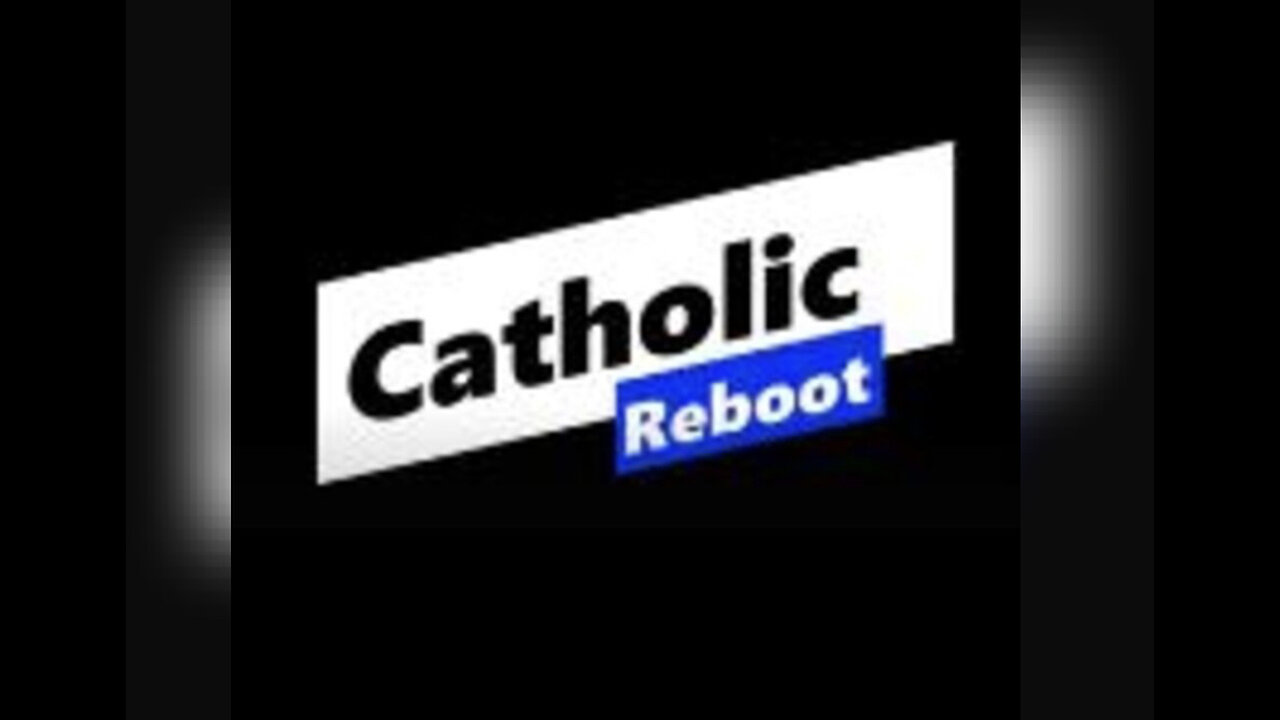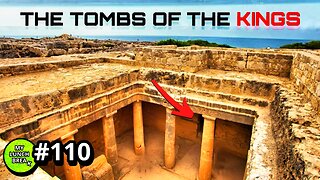Premium Only Content

Episode 1006: The Symbol of the Chalice in the Garden of Olives
The Symbol of the Chalice in the Garden of Olives
Atila Sinke Guimarães
At the Last Supper, when Our Lord celebrated the first Mass, He was carrying out a ritual of the Jewish Passover or Pascal meal. Pascal signifies “passage,” and this ceremony celebrated the preparation for the successful passage through the Red Sea and consequent liberation of the Hebrews from Egyptian domination. In the ceremony of the Last Supper, Jesus Christ would begin the preparation for His passage through a sea of blood - a red sea – to liberate humanity from the captivity of the demon.
The analogy could not have been more complete. In the Pascal ceremony, the father of the family prepared his household for the crossing that would take place. This is why they began with the Pascal meal of lamb, so that they would be nourished for the difficult journey ahead. The ceremony also involved a chalice.
A precious chalice made of one carved agate placed in a golden base and embellished with precious jewels
The father of the family filled it with wine and gave it to his household to drink – with the same intention. Our Lord took advantage of this symbology and instituted the Holy Mass. He left us the Chalice of His Blood, in order to prepare us for the passage from this earth of exile to our celestial homeland. He gave us eat and drink of the Pascal Lamb, in order to prepare us for the difficult journey.
Leaving the Cenacle, Our Lord went to the Garden of Olives, where God the Father also did something analogous: He prepared Jesus Christ for the true Pascal that would come, the passage from life to death by the Passion, and the passage from death to life by the Resurrection. God the Father sent angels with three chalices and gave them to Jesus Christ to drink. The first chalice contained a bitter wine. With it, he saw all the suffering through which He would have to pass from that moment until the hour of His death. In face of the horror of these sufferings, Our Lord asked: “If it be possible, remove this chalice from Me. But not my Will, but Thine, be done.”
The second chalice also held a bitter wine. He was shown all the crimes and sins that would be committed through History from the moment after His dolorous Passion until the end of the world. Individual sins, sins of institutions and nations, sins of historical eras. It is certain that in this vision the Divine Lamb saw the present day situation of the Catholic Church. In face of the rejection of grace, which so many sins represent, He made that famous lamentation: “Quae utilitas in sanguine meo?” Of what use will the blood that I am going to shed be for men?
He walked to the place where he had left the three Apostles in search of consolation, but the Apostles were sleeping. He returned to the grotto and began to sweat blood. Doctors affirm that for a man to sweat blood, he must be at the apex of moral agony – only death itself can surpass this summit of suffering. Therefore, after reaching this zenith of moral suffering, God the Father sent him an angel with another chalice.
This one had a smooth and sweet wine, a wine of reparation, a wine of consolation. With it, he was shown all the acts of virtue, all the glory to God that would be given throughout all of History. Acts of men, acts of institutions, acts of nations, acts of historical eras. It is certain that the acts of fidelity of the Catholics who refuse to bend their knees before the present day progressivist idols gave some consolation to Our Lord and presented reparation for the sins committed.
Here I remind readers that the perspective of reparation in which we place ourselves can and should return us to that moment, in which the Word of God prepared Himself to begin the Universal Redemption. It is certain that those who make reparation for the sins that are committed today against the Holy Catholic Church are contributing, in a mysterious way, to console Our Lord Jesus Christ in the Agony of the Garden, giving Him that suave and sweet wine to drink.
It seems to me that there is an act of reparation that we should make internally at the moment when we assist at the Holy Mass and receive Communion. This would be to unite ourselves to Our Lord in that first step of His Passion by offering Him our love, our dedication to the Catholic Church, our desire to help Him now with everything that we can – in order to alleviate the suffering through which the Church, the Mystical Body of Christ, is passing.
-
 30:55
30:55
Tundra Tactical
5 hours ago $2.84 earnedFaith, Family, Gun Rights : Tundra Tactical Interviews Erich Pratt Vice President Of GOA
18.7K -
 4:13:39
4:13:39
Nobodies Gaming
7 hours ago $8.41 earnedNobodies : Rumble Gaming MARVEL RIVALS
57.4K6 -
 24:08
24:08
MYLUNCHBREAK CHANNEL PAGE
1 day agoUnder The Necropolis - Pt 4
72K22 -
 19:52
19:52
Adam Does Movies
4 hours ago $1.09 earnedEmilia Pérez Movie Review - It's Uniquely Awful
15.6K2 -
 20:07
20:07
BlackDiamondGunsandGear
10 hours agoSPRINGFIELD ECHELON COMPACT / NOT GOOD
25.9K3 -
 1:05:06
1:05:06
Man in America
10 hours agoThe Terrifying Truth Behind Chemical Fog, Wildfire Smoke & Chemtrails w/ Dr. Robert Young
15.1K14 -
 LIVE
LIVE
Tundra Tactical
3 hours ago $0.31 earnedSHOT Show 2025 Wrap Up!! On The Worlds Okayest Gun Live Stream
598 watching -
 LIVE
LIVE
Right Side Broadcasting Network
1 day agoLIVE REPLAY: President Donald J. Trump Holds His First Rally After Inauguration in Las Vegas - 1/25/25
4,428 watching -
 2:55:24
2:55:24
Jewels Jones Live ®
1 day agoWEEK ONE IN REVIEW | A Political Rendezvous - Ep. 107
103K40 -
 1:33:29
1:33:29
Michael Franzese
1 day agoTrump Wastes No Time: Breaking Down Trump’s First Week Executive Orders | LIVE
116K89